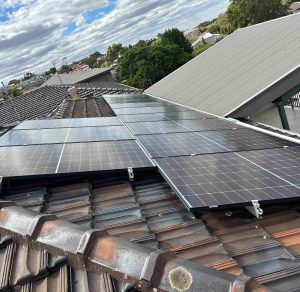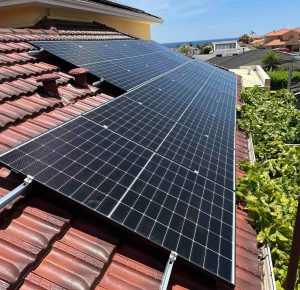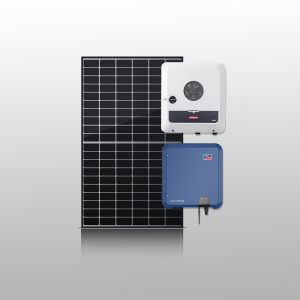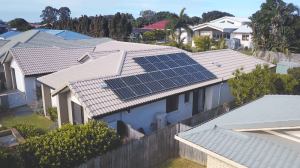As renewable energy is derived from renewable resources, very few resources are lost due to its production. Based on its source, they are of different types.
Types of Renewable Energy
Solar energy derived from the sun, wind energy derived from the motion of the wind, hydroelectric energy derived from the gravitational potential of water, Biomass energy taken from Plants, Hydrogen, and Fuel Cell derived from chemical reactions that produce energy, Geothermal Power derived from the Earth’s heat.
Air pollution and climate change are the two grave issues the whole world is facing now. Fossil pollution drives the climate irreversibly into a new and less human-friendly climate. It takes a massive toll on human life every year. Going renewable will save millions of lives and dollars per year. Certainly, renewable energy is the only energy system that is viable for the long term.
Coal, petroleum, and wood which were the main sources of energy are not renewable resources. These resources are not long-lasting. Fossil fuels have been part of human life for a long time. It has its roots deep in the economy of the country. The attempt to replace it has just begun.
An energy replacement system is always good as fossil fuel supplies decline and their prices hike. Presently less than 10% of energy is sustainable. It is high time we moved to a low-carbon, low-environmental-impact energy, that hampers human lives in no negative way. A zero-emission energy system that uses 100% clean energy is the need of the hour.
Renewables have become cheaper without government subsidies or breaks in just the last few years. The world is on track to be 100% renewable by 2050. Lack of knowledge and awareness of clean energy technology makes people reluctant to use it. With collaboration and innovation, making the world run on 100% renewable energy seems possible.
100% Renewable Energy by 2050
80% of the energy infrastructure can be powered by renewable resources by 2030 and 100% by 2050. The National Renewable Energy Lab thinks that 100% sustainability is technically achievable over the next few decades.
The transition will be challenging. It should be done in such a way that it doesn’t interrupt people’s life and the financial condition of the country. Wind and solar are cheap sources of renewable energies. Their costs, material, labour charges are less compared to other sources. The renewable energy stem installation cost is high, the cost of maintenance is low.
Even though are some drawbacks, deserts are an ideal place for the solar farm. Likewise, farmlands and Highfields are also the ideal places for wind and solar energy generation. Transmission of energy from one place to another place is now possible without much transmission loss using direct current high voltage lines. As the scale of networks is larger, lesser will be the problem of interruptions in supply.
Uncertainty and unreliability of the renewables demands for a high production capacity than the actual demand. 67% of energy production is wasted to have 99% renewable penetration for a standalone microgrid huge capacity is needed as compared to actual demands. It depends on many factors like geographical location, demand-supply etc.
Renewable Energy Storage
Turning to 100% renewable would require a bit more infrastructure than it has now. We need much higher generation capacities, a good battery storage system, or a pure solar full-Earth-grid. While mixing solar and wind, a battery storage system will be required so that the energy can be stored at times of peak production and can be used during times of less or no production.
With technological improvements, it would be possible in near future to send solar power anywhere on the globe even without the help of batteries. For instance, a grid that wraps around the globe could easily do it.
Based on Bloomberg NEF forecasts, solar and wind will power half the globe by 2050. By that time, coal and nuclear will be replaced by cheaper renewables and natural gas. Though wind, water, geothermal and waves can be added to the mix, solar power and wind energy are the main contributors of the power business in most parts of the world.
Power the world with 100% renewable energy
The answer given by most of the researchers to this question is a big YES. Such an energy system has economical as well as environmental benefits.
As per the study conducted in Finland’s LUT University (LUT) and the Energy Watch Group (EWG), a global 100% renewable energy system can be a reality with zero GHG emissions before 2050 and more cost-effectively than the current fossil fuel and nuclear-based energy system.
The primary source of energy will be solar PV (69%) in a 100% renewable energy system. Others being wind energy (18%), biomass and waste (6%), hydro (3%) and geothermal energy (2%) by 2050.
Wind and Solar
Wind energy and solar PV together make up 88% of the total energy supply. Therefore, 96% of renewable electricity generation will come from solar and wind energy by 2050.
Energy storage will meet nearly 23% of electricity demand and approximately 26% of heat demand. Solar batteries and thermal energy storage can respectively use for electricity and thermal power. There will be 9 million unemployment in the global coal industry. But, there will be 15 million new jobs in the renewable industry sector. This transition will employ 35 million people and solar PV emerges as the major job-creating industry. As a result, employing more than 22 million by 2050. Global renewable energy generation and storage capacities will improve efficiencies and create energy independence.
By being 100% renewable, we have access to the best and efficient ways to save energy and to make our planet sustainable. This global transition to a 100% renewable power system is the only sustainable option for the energy sector that is compatible with the Paris Agreement. The whole world is marching steadily towards it with the hope of achieving it by 2050.









